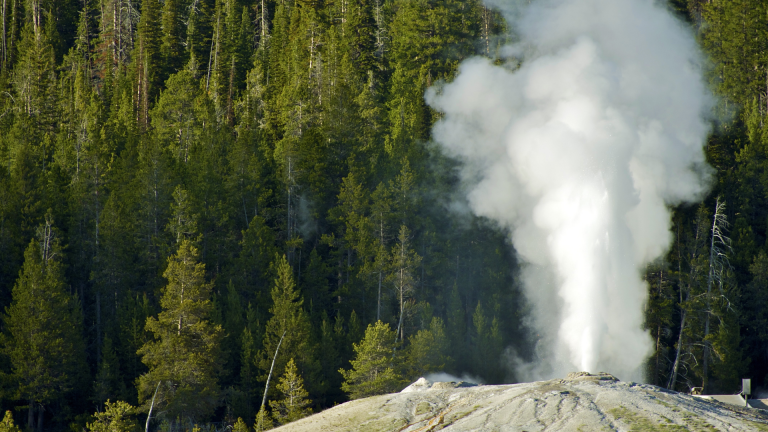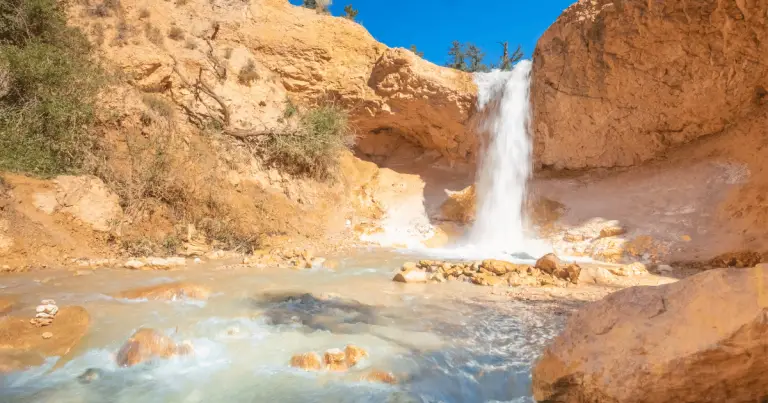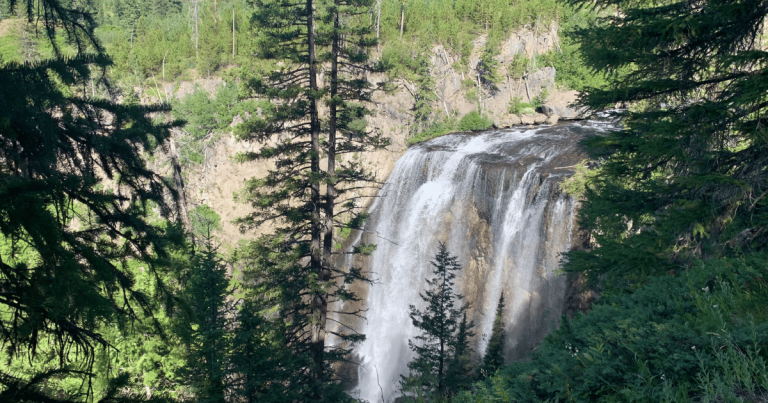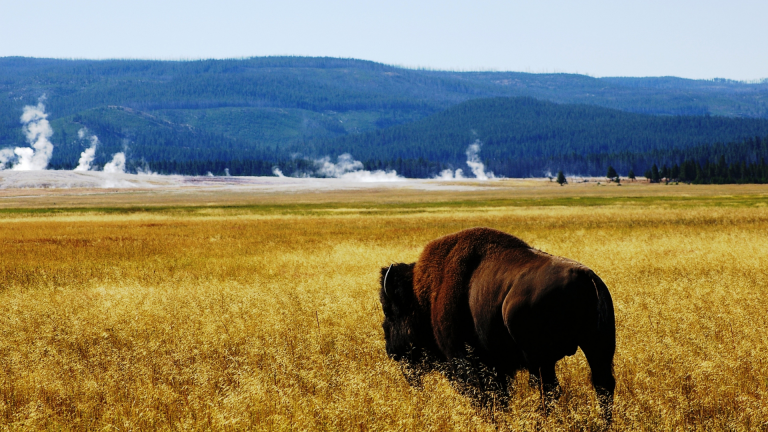Unveiling the Enigmatic Beauty: Exploring the Kepler Cascades
The Kepler Cascades is a natural wonder located in Yellowstone National Park. It showcases the power and beauty of nature’s geological formations with its stunning colors and flowing water. This attraction is a testament to how the park’s landscape has been shaped over time.
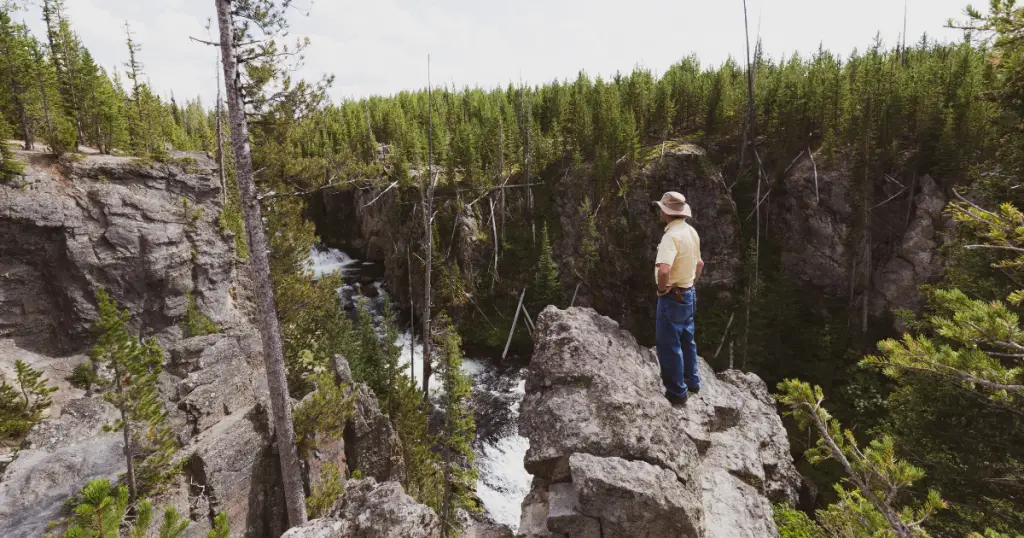
Geological Origins of the Kepler Cascades: Volcanic Activity and Hydrothermal Systems
The geological origins of the Kepler Cascades can be traced back to the area’s intense volcanic activity. Yellowstone, known as a hotbed for geothermal dynamics, is home to an active volcanic system.
The region experienced colossal volcanic eruptions roughly 640,000 years ago, forming an expansive caldera. The subterranean heat from this volcanic system fuels Yellowstone’s hydrothermal features, including the Kepler Cascades.
The cascades are essentially a product of the hydrothermal system, where heated groundwater rises to the surface, causing the erosion of the underlying rock strata and creating the cascading waterfall features we observe today.
This fascinating interplay between volcanic activity and hydrothermal systems is the foundation of the geological splendor encapsulated in the Kepler Cascades.
Volcanic History and Hydrothermal Features of Yellowstone National Park
Yellowstone National Park sits atop one of the most active volcanic systems in the world. Its volcanic history spans millions of years, with three significant eruptions occurring in the past 2.1 million years. These cataclysmic eruptions have shaped the park’s diverse landscape and given rise to its incredible hydrothermal features.
The park boasts over 10,000 hydrothermal features, including geysers, hot springs, and fumaroles. Geysers, like the iconic Old Faithful, occur when underground water is heated by magma to the point it explodes through the earth’s surface. Hot springs are formed when heated water rises through cracks in the earth’s crust, pooling in hollows and depressions.
Fumaroles, or steam vents, occur when the groundwater is completely vaporized before reaching the surface, resulting in a constant stream of steam.
Formation of Waterfalls: The Role of Geothermal Activity
The geothermal activity also plays a crucial role in shaping the cascades in Yellowstone, including the Kepler Cascades. Heated groundwater, a product of subterranean geothermal features, rises to the surface, eroding the underlying rock layers over time.
This continual erosion, paired with the park’s diverse topography, fosters the formation of cascading waterfalls. The park’s underground geothermal features directly influence the water flow in these cascades, as the heated water contributes to the overall volume and velocity of the cascading water.
Thus, the breathtaking beauty of the Kepler Cascades and other waterfalls in Yellowstone is a testament to the enduring power and influence of the park’s geothermal activity.

Unique Characteristics of the Kepler Cascades
The Kepler Cascades stand out among other waterfalls in the park, thanks to their unique features. Spanning nearly 200 feet in length and reaching a maximum height of 20 feet, the cascades cascade down from a series of small pools and rivulets carved out by Yellowstone’s geothermal activity.
Visual Aesthetics
The visual aesthetics of the Kepler Cascades are nothing short of breathtaking. As the water cascades down, it illuminates a vibrant palette of colors derived from the underlying mineral deposits.
The cascade appears like an artist’s masterpiece, with the shimmering water, painted by nature, flowing over the rugged yet delicately crafted landscape.
The turbulent rush of the water juxtaposed with the serene beauty of the cascades creates a mesmerizing spectacle, embodying nature’s raw power and intricate elegance.
Geological Features
The geological features of the Kepler Cascades further enhance their allure. The vibrant colors of the cascades are attributed to the diverse array of minerals and rocks, such as iron, manganese, and sulfur, which are eroded by the flowing water.
Dissolved in the heated water, these minerals get deposited along the cascade’s edge, creating a natural canvas of striking colors.
Moreover, the cascades’ unique formations are partly shaped by microbial mats. These complex communities of bacteria and other microorganisms play a crucial role in mineral precipitation, contributing to the formation and stabilization of the cascade’s unique structures.
The interplay between these geological and biological features creates an environment that is as scientifically fascinating as visually stunning.
More than just Geological Phenomena
The Kepler Cascades are not merely a geological phenomenon; rather, they exist in the context of a greater ecosystem. The cascades provide valuable habitat for a variety of species, including fish and amphibians. Its waters are teeming with macroinvertebrates, while its rocks serve as a refuge for migrating birds and other wildlife.
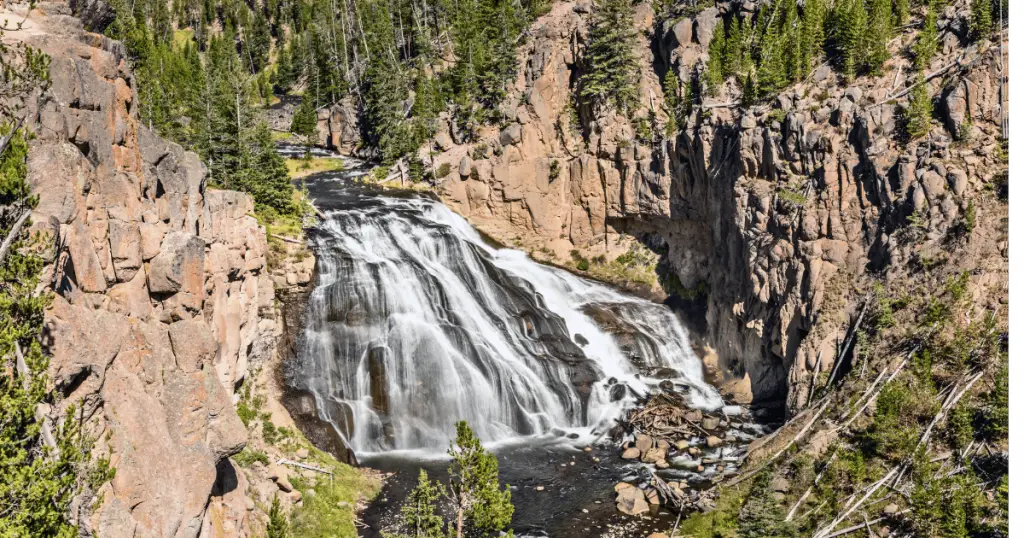
Biotic Diversity
Yellowstone National Park’s unique geothermal activity significantly influences its local flora and fauna. The heightened temperatures and mineral-rich waters associated with areas like the Kepler Cascades create an extreme environment.
Amidst these harsh conditions, diverse life forms, remarkably adapted to survive and thrive, have emerged. Thermophiles, microorganisms that can withstand extreme heat, populate the hot springs near the cascades.
These microorganisms, ranging in color from bright yellow to deep red, contribute to the vibrant hues that make the cascades so visually stunning.
Certain plant species have also adapted to the park’s unique geothermal conditions. For instance, the rare Yellowstone Sand Verbena, endemic to the park, has adapted to grow in the warm, sandy soils heated by the park’s thermal activity.
Animals, too, utilize this geothermal landscape. Grizzly bears are often seen enjoying thermal baths, and some bird species, like the American dipper, are known to forage in the park’s hot springs, using the warm waters to their advantage in the frigid winter months.
Geological and Ecological Interplay
Like other thermal features in Yellowstone, the Kepler Cascades play a significant role in the park’s geothermal ecosystem. They contribute to the geothermal gradient of the area, creating a diverse array of microenvironments.
These gradients, in turn, support myriad specialized plant communities uniquely adapted to the varying temperature and moisture conditions.
These thermal features not only provide warm habitats amidst the often cold Yellowstone landscape, but they also aid in nutrient cycling.
The mineral-rich waters of the cascades deposit nutrients along their course, enriching the soil and promoting plant growth. In addition, the microbial mats in the cascades play a critical role in the park’s ecosystem.
They contribute to chemosynthesis, utilizing geothermal energy to convert inorganic materials into organic matter. This provides a food source for other organisms, underlining the ecological significance of these thermal features.
The complex interplay of geological and ecological factors around the Kepler Cascades beautifully illustrates how Yellowstone’s unique geothermal features contribute to the park’s rich biodiversity and highlight the inherent interconnectedness of nature.
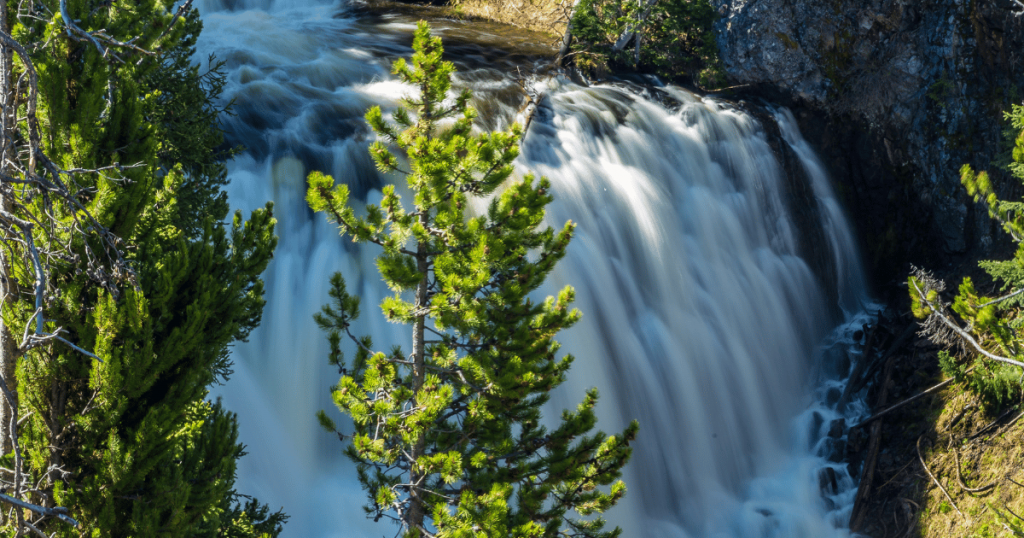
Visitor Experience and Conservation Efforts
The Kepler Cascades offer a truly unforgettable experience for Yellowstone visitors. The cascades are easily accessible from the nearby Fishing Bridge, and a boardwalk allows visitors to enjoy its beauty without disrupting the sensitive ecosystem.
Accessibility and Viewing Points
Visitors can easily access the Kepler Cascades, located just south of Old Faithful on Firehole Canyon Drive. A well-maintained, wheelchair-accessible boardwalk trail leads to a viewing platform, providing an unobstructed view of the cascades’ mesmerizing beauty.
The overlook is safe and provides information panels detailing the cascades’ geological and ecological significance. The Lone Star Geyser Trail is a must for those seeking a closer interaction with nature.
This gentle, 4.8-mile round-trip hike offers spectacular views of the Firehole River, Kepler Cascades, and the Lone Star Geyser.
Conservation Challenges
Despite its protected status, the Kepler Cascades face multiple conservation challenges. Human impact, particularly from increased visitation and off-trail exploration, can disturb the delicate ecosystem and cause erosion.
Climate change also poses a significant threat, as altered precipitation patterns and temperature fluctuations can impact the geothermal dynamics and, in turn, the biotic life that relies on them.
The park authorities are committed to preserving and protecting the Kepler Cascades. They strictly enforce ‘Leave No Trace policies’ and encourage visitors to stay on designated trails to minimize disturbance.
Additionally, ongoing scientific research is being conducted to better understand the interplay between geothermal features and the park’s ecosystem.
This knowledge aids in developing effective conservation strategies that ensure the cascades’ longevity for future generations to appreciate.
Conclusion: Kepler Cascades
Kepler Cascades exemplify the extraordinary confluence of geological and ecological phenomena in Yellowstone National Park. The cascades’ stunning visual spectacle results from intricate geological formations, a myriad of mineral-rich waters, and the influence of thermophilic microorganisms.
Their geothermal features create a unique ecosystem accommodating diverse life forms and underscore the critical role of thermal features in the park’s biodiversity. Despite facing conservation challenges, efforts are directed toward understanding and minimizing human and climatic impacts on this natural wonder.

